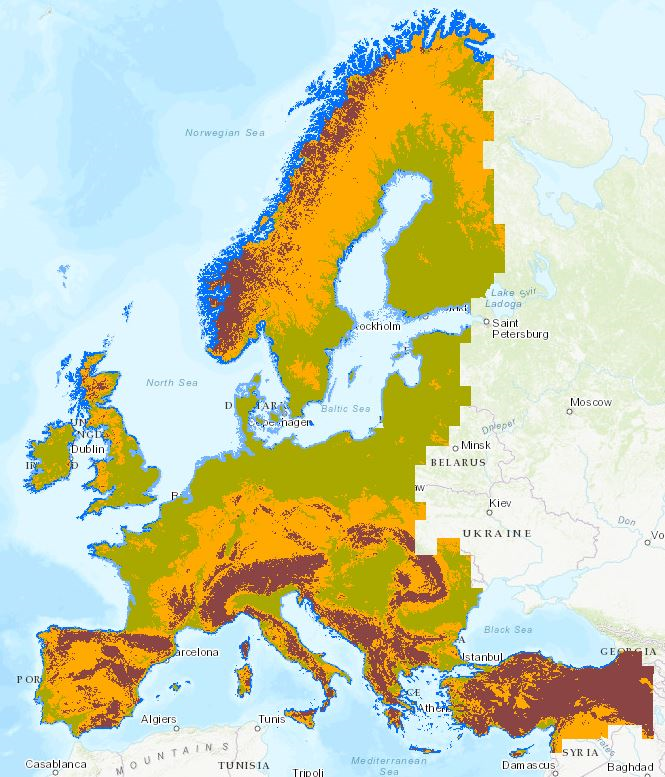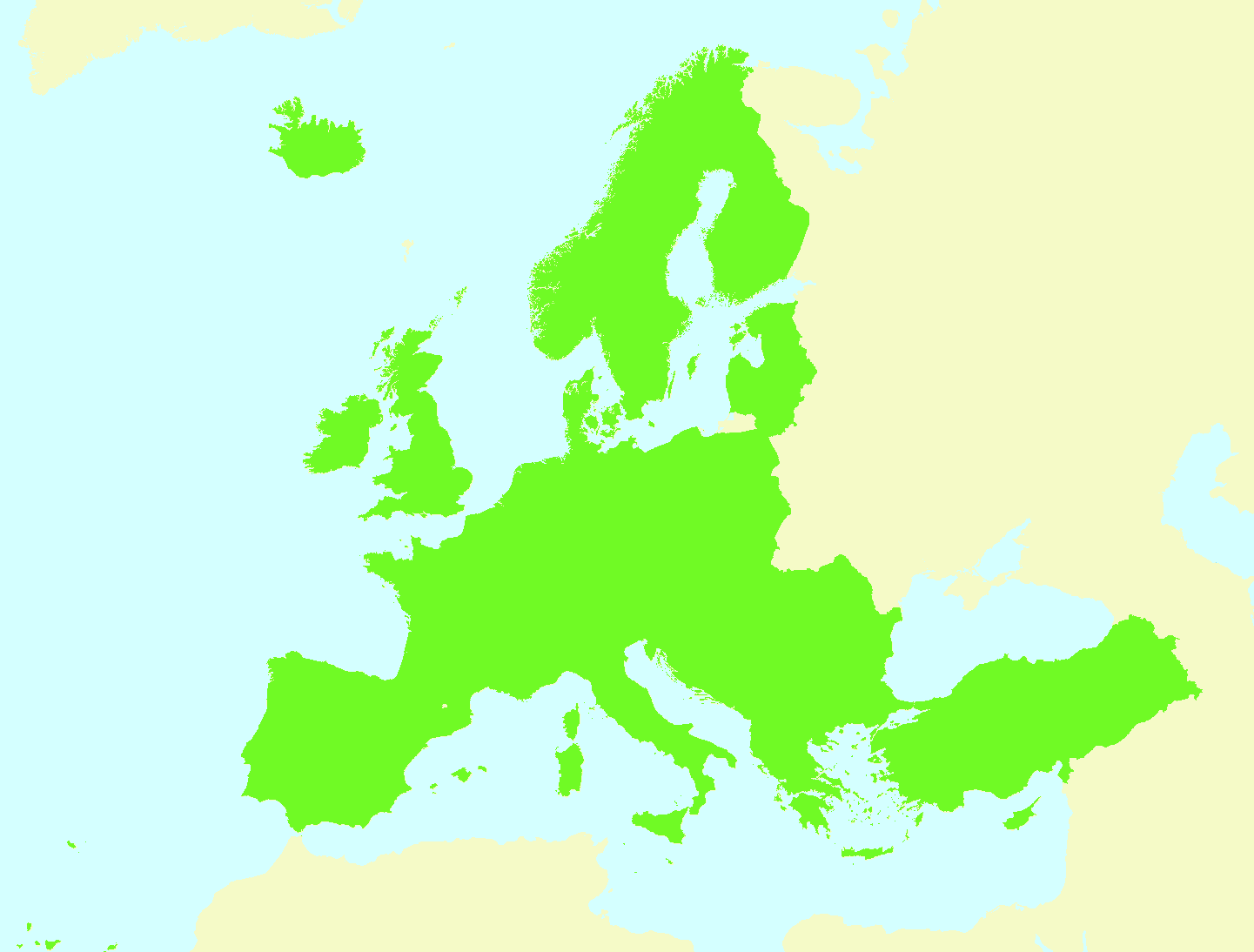EEA32 (2006-2013)
Type of resources
Available actions
Topics
INSPIRE themes
Keywords
Contact for the resource
Provided by
Years
Formats
Representation types
Update frequencies
Resolution
-

This layer defines homogeneous areas as function of height, slope and distance to the sea. The Elevation Breakdown is used to allocate Land Cover Changes into homogeneous areas as function of height, slope and distance to the sea. It defines five relief typologies: 1) Low coasts, 2) High Coasts, 3) Inlands, 4) Uplands and 4) Mountains. The previous enumeration corresponds to values in the grid.This layer is an updated version using similar methodology to the one created on 2006 (same classes and thresholds) but it has been generated using up-to-date high resolution datasets (EU-DEM) in order to create a more accurate layer.
-

Generalisation at 1 km resolution of elevation breakdown 100 m (based on EU-DEM). This layer defines homogeneous areas as function of height, slope and distance to the sea. The Elevation Breakdown is used to allocate Land Cover Changes into homogeneous areas as function of height, slope and distance to the sea. It defines five relief typologies: 1) Low coasts, 2) High Coasts, 3) Inlands, 4) Uplands and 4) Mountains. The previous enumeration corresponds to values in the grid.This layer is an updated version using similar methodology to the one created on 2006 (same classes and thresholds) but it has been generated using up-to-date high resolution datasets (EU-DEM) in order to create a more accurate layer.
-

The CLC2012 land mask is a dataset derived from CLC2012 intended to be used as a reference dataset for data harmonisation within the EEA. It is a mask where all pixels with any valid land cover class value in CLC2012, except for class 523 - Sea and ocean, get a value of "1". The rest of pixels get a "0". In other words, land areas with CLC2012 data are identified with the value "1", whereas sea areas and areas with no CLC2012 data available get a value of "0".
-

The LEAC mask at 1 km x 1 km is a dataset derived from CLC2012 used as the reference mask for accounting purposes within the EEA. It is a mask where all 1 km x 1 km cells (in line with the European reference Grid) with any valid land cover class value in CLC2012, except for class 523 - Sea and ocean, get a value of "1". The rest of pixels get a "0". In other words, land areas with CLC2012 data are identified with the value "1", whereas sea areas and areas with no CLC2012 data available get a value of "0".
 RUC Geo-Data catalogue
RUC Geo-Data catalogue